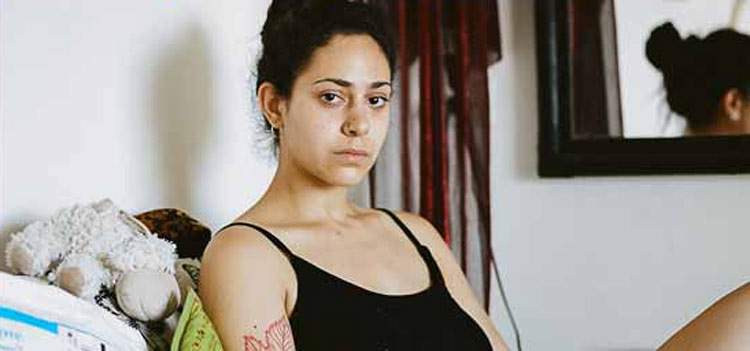Turin, Plural Looks: shots on migration issues CAMERA's Project Room
The complexity of today’s migrations, the cultural richness of our present, the new generations in comparison are at the center of the exhibition Sguardi plurali, which opens to the public on December 16 in Turin, in the Project Room of CAMERA - Centro Italiano per la Fotografia, scheduled until January 9. Born from the collaboration between CAMERA and FIERI - Forum Internazionale ed Europeo di Ricerche sull’Immigrazione and Società Umanitaria, the exhibition presents 45 shots, the result of participation in the Sguardi Plurali photography competition aimed at young photographers on the themes of migrationand second generations.
The exhibition, which was already presented in Carbonia last October as part of the How to film the world event promoted by the Carbonia Film Festival, will later be shown in Bologna and Milan in early 2022. Plural Glances features the projects submitted by Oleksandra Horobets (Ukraine, 1997), Karim El Maktafi (Desenzano del Garda, 1992) and Danielle Souza da Silva (Fortaleza, Brazil, 1997), winners in order of first, second and third prize, as well as a shot for each of all the participants in the call for entries, in a kaleidoscope of stories and suggestions capable of rendering the many facets of this society. Each of them has a story of their own: some are asylum seekers and refugees, others are Italian citizens or waiting to become one. And all, through photography, have expressed a project, a feeling or a sentiment. For some it was a matter of drawing out a personal experience, for others an unexpressed desire.
Kolobok Oleksandra Horobets, for example, recounts the painful long-distance relationship with her mother through the filter of a Ukrainian folk tale. Italian-Moroccan photographer Karim El Maktafi, on the other hand, questions the situation of boys and girls born and raised in Italy, yet without being fully recognized as citizens. Constructed with a typically documentary approach, They call us second generation conveys the sense of suspension of those who, like him, are forced in the balance between the sense of belonging to a place and the gaze of those who still consider them foreigners. For Danielle Souza da Silva, too, her own personal experience becomes the stimulus for the construction of a Logbook, where words and photographs form a puzzle of cities, people, memories and suggestions.
The winners of the call for entries exhibited at CAMERA were selected by a jury composed of: Pietro Cingolani (anthropologist, University of Bologna and FIERI), Monica Poggi (curator of CAMERA, Turin), Annalisa Frisina (visual sociologist, University of Padua), Mariagiulia Grassilli (anthropologist, University of Bologna and director of the Human Rights Nights Festival), Délio Jasse (photographer and video artist), Suranga Deshapriya Katugampala (photographer and video artist).
On the occasion of the exhibition opening on Thursday, Dec. 16, at 5 p.m., photographers Oleksandra Horobets and Karim El Maktafi will accompany the interested public to discover their works in CAMERA’s Project Room. Following this, at 6:30 p.m., there will be a free meeting titled Plural Stories in the Gymnasium that will bring together different professional figures in an exploration of issues related to photography’s relationship with the cultural and social multiplicities of today’s Italy.Speakers will include sociologist Andrea Pogliano with a reflection on the representation and self-representation of migrations, art critic Andrea Tinterri on the contaminations of contemporary photography, and artist Déljo Jasse who will talk about his artistic journey between Angola, Portugal and Italy. Presenting the project Sguardi Plurali will be Francesco Giai Via of the Carbonia Film Festival and Pietro Cingolani of FIERI. Monica Poggi, CAMERA’s exhibitions manager, will moderate the meeting.
For info: Torino www.camera.to |camera@camera.to Facebook/ @CameraTorino Instagram/ @cameratorino
 |
| Turin, Plural Looks: shots on migration issues CAMERA's Project Room |
Warning: the translation into English of the original Italian article was created using automatic tools. We undertake to review all articles, but we do not guarantee the total absence of inaccuracies in the translation due to the program. You can find the original by clicking on the ITA button. If you find any mistake,please contact us.




























